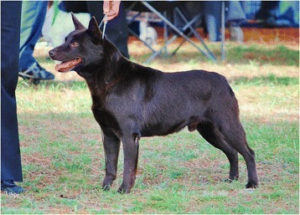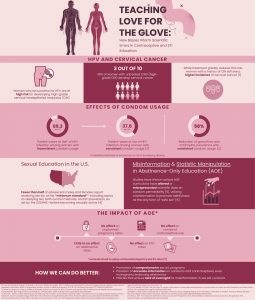Introduction
This paper is not meant to be a justification of criminal behavior, but rather as an understanding of human behavior and the role genetics play in why a person chooses to do what they do. The role genetics plays on both the behavioral and physical qualities of animals is seen in a variety of ways, but recently the role genetics has on human behavior is being increasingly researched. The intersection between genes and behavior has even been brought up in court cases with attention to how criminals should be sentenced. The understanding of behavior is not of nature or nurture but of one in the same and both have roles to play in human behavior.


We see the impact genetics has on behavior in animals as dogs are selectively bred not only for physical prowess but also mentally as no owner wants a dog that shies away from their duty. There are legal reasons to selectively breed dogs such as policing or farming, but there are also illegal reasons for selective breeding dogs such as dog fighting. Cattle are selectively bred because they produce genetically favorable outcomes such as cows for milking, sheep for their wool, and horses for things like horse racing. But that differentiates us from animals as humans are not selectively bred and are responsible for our actions. Research that involves the way an organism acts is due to heritable traits mostly involving research done on animals. The research for leans and siscowet is about the depth of their environments in a lake and its relation to the small or extensive vertical movements they exhibit. The researchers found that their data supported their hypothesis that depth selection in Lake Char ecomorphs is heritable and that the movements done are passed on to offspring.3 This supports that the argument of nature vs. nurture is not one of opposing ideas but one of collaboration and bearing some responsibility for behavior and as such actions. But the transition of the information taken from research on animals to humans is difficult from simple vertical movements of fish to the complex behavior and actions of humans. Especially when it comes to the court system where there must be scientifically backed and viable data to support this type of evidence that can be admitted to court since a person’s life will be affected because of this. But precedents are already being made and there are distinct genetic markers that explain behaviors in select individuals especially when it comes to the criminal court system.4 A person’s behavior can be attributed to both the nurturing of an individual and their innate nature due to their genetics.
Ethics
Involving the nature aspect is a difficult thing to bring into the conversation especially as it involves thinking about ourselves. To have research done involving human behavior opens a can of worms and this paper only focuses on research being done as it pertains to males and a specific enzyme involving specific behaviors. But as genetics becomes better understood what other secrets would we find out about ourselves? When science shows evidence of such things that our genetics is playing a part in how we behave will we begin to pass judgment on people based on what genes they have? The science of genomics is only becoming faster and more accessible as is our understanding of the subject genetics. Will there come a time when have fully understood the human genome we can pass judgment on a person purely based on the genetics they have? With this understanding do people even have free will when genetics is playing a role in their behavior? Then as the glaring issue is brought up how can we pass judgment on criminals who cannot control their genetics? But although a big issue to consider there are other aspects of life and as such more issues arise when going down this path. The big issue mentioned before is if genetics plays a role in behavior does it justify a criminal’s crime? Should we be treating criminals as we are now, or should the system be treating them differently because of something they cannot control? As will be shown in the next paragraph genes being used in court are being suggested to be used in almost the opposite manner. As is suggested because of their genetics the criminals will most likely commit crimes again and as such their sentencing should be harsher. But is that the correct response to knowing that genetics play a role in human behavior? A precedent like that can have the potential to affect other parts of society and why shouldn’t this affect other aspects of society if the court system seems to take genetics into consideration?
Genetics taken to Court
The explanation of genetics being considered a factor in the behavior of a criminal for why they committed a crime is already being taken into consideration in court. While most would assume that in the case of nature vs. nurture, genetics would be used to justify criminals of their crimes and thus should not be judged too harshly, the opposite is taking place. There is a two-step process when it comes to using genetics in court. The first helps determine if the person committed a crime, and the second helps determine the sentence after they have been found guilty which can help give a harsher punishment. They will use behavioral genetic markers to suggest that the criminal will show future dangers and that they should get an extension on their sentence. The genetic marker highly associated with behavior that is involved with a crime is on the X chromosome called monoamine oxidase A(MAO-A).5

The MAO-A isoenzyme is associated with aggressive and agonistic behavior by regulating neurotransmitter systems that use serotonin, dopamine, and noradrenaline and this enzyme activity predisposes individuals to antisocial impulsive behavior.7 The research conducted about MAO-A relates both nature and nurture as factors when it comes to a person’s behavior, especially in young men. The MAO-A uVNTR (variable number of tandem repeats) low-expressing genotype (MAOA-L) along with mistreatment in their childhood is associated with the same phenotype in males. The research done and references in this paper only attribute MAO-A to behavior as it pertains to the nurture part of an individual’s life.8 9 10 MAO-A is associated with certain behaviors like impulsivity in young adult males but depends on certain factors like family environment in childhood, diet, and allelic variation another genetic factor. 11 Other nurture factors like types of stress associated with delinquency as such proximal stress for males and females and distal stress for males. 12 Another research on drug selling and victimization found that drug selling increases violent victimization in males and those who carried certain alleles of MAO-A were greatly affected with evidence of gene and environment interaction. 13 One reference involves multiple studies and court cases that included cases where genetics were involved, especially the MAOA gene. Such cases want to involve this gene to justify that these individuals cannot help their nature and want to involve this type of evidence in steps in the legal system that have not have any legal grounding or at the time not enough scientific study.14
Court Cases
One case, the State v. Yepez is one such case, that tried to use such evidence and had failed due to a multitude of reasons not only because the court ruled that gene was not justifiable enough to explain the behavior of the crime. Such as that the studies for MAOA are either dated or methods used were improperly used as well as studies involving genome-wide association studies (GWAS) found no reliable correlation between MAOA and violence.15 The first reference makes remarks about GWAS and of cases that use behavioral genetics but not as the one the defendant in State v. Yepez was trying to hope for.16 17 There are studies now in a gray area those for and against the relationship between MAOA and aggression and as well as many of these studies are recent and relatively new. This type of behavioral genetic research, especially on humans, seems to stem from research or science methodology from the 90s to now where the reference data is dated. When it comes to real-world application research, much of the data comes from studies about MAOA where the scientists can’t agree. But as stated before, two sides agree with MAOA and aggression, and those that disagree then within those that agree there are two sides to the same coin. One side uses the research for harsher punishment of criminals while the other tries to use the studies to back up the defendants and help relieve responsibility from them.
Research in Humans?
We cannot ethically experiment on humans to selectively breed them and then put them in environments to make them uncomfortable so that in the hopes we can see their behavior. The research done on animals is hard to compare to humans. The actions shown are simplistic in animals, although have social structures, and are not as complex as humans. We have laws, courts, jobs, towns, farms, cities, businesses, religion, and many other factors to consider that drive the motivation for behavior. The research done on animals is easy to bypass from a moral standpoint but when it comes to trying to understand human behavior experimentation becomes complicated and understanding behavior becomes more difficult to uncover. The research and experiments done associating MAO-A with behavior along with nurture factors are hard to compare with animal research. As mentioned before, it is hard to research behavior in humans the way research is done in animals. The animal research scientists were able to expose the animals to other environmental stimuli and breed the animals how they wanted.18 Obviously, the same experimentation cannot be done on humans and the limitation is seen in the three research articles with humans as the main subject trying to associate genetics and environment with behavior.19 20 21 Research to try to better understand human behavior and the way we are able to understand animal behavior would have to involve the way animals were treated in their experiments. This is the topic discussed before that humans are not animals in the sense that it would not be ethical to experiment on humans the way animals are experimented on to understand their behavior. As the science of genetics becomes more accessible with things like genome sequencing our understanding of the human genome becomes better. Further developments in this field of science would be helpful to understanding how genetics plays a role in human behavior. The research there is now when it comes to between one gene, a certain type of behavior, and certain types of environments as it associates with crime. As stated, before humans and society are more complex and there may be other genes associated with other types of behavior giving further insight into understanding why people take certain actions. So, research in understanding human behavior as it pertains to genetics is something that has much more to be unraveled.
Conclusion
If the hurdle were to be passed and research found that genetics is influencing our behavior how does that affect our understanding not only ourselves but how we treat those around us? As genetics becomes more unraveled and the human genome becomes easier and faster to process should we begin to judge people based on their genetics? What other genes are associated with human behavior? The issue of nature vs. nurture is viewed as opposing sides are now one and the same. Once again, this paper is not meant to justify criminal behavior because of one’s genetics but may be used to further incriminate a criminal and pass a harsher punishment. But is that the way genetics and behavior data should be used if at all when it comes to how people are viewed? Genetics already has its place set when it comes to the court system and our understanding of the human genome is becoming more understood. Other aspects of life and how humans choose to behave the way they do because of their genetics may soon be looked at the way it is now being looked at in court. Further research on other genes and their association with other types of behavior can be looked at in the way MAO-A was associated with criminal behavior. Nature and nurture in humans are associated with one another and as such associated with human behavior.
- Elizabeth R. Arnott et al., “Strong Selection for Behavioural Resilience in Australian Stock Working Dogs Identified by Selective Sweep Analysis,” Canine Genetics and Epidemiology 2, no. 1 (May 7, 2015): 6. ↵
- Elizabeth R. Arnott et al., “Strong Selection for Behavioural Resilience in Australian Stock Working Dogs Identified by Selective Sweep Analysis,” Canine Genetics and Epidemiology 2, no. 1 (May 7, 2015): 6. ↵
- Frederick Goetz et al., “Nature or Nurture: A Genetic Basis for the Behavioral Selection of Depth in Siscowet and Lean Lake Char (Salvelinus Namaycush) Ecomorphs,” Canadian Journal of Fisheries and Aquatic Sciences 80, no. 3 (March 2023): 517. ↵
- Seely Kaufmann, “Why Not Both Nature and Nurture: Using Behavioral Genetic Markers as Sentencing Factors,” University of Richmond Journal of Law & Technology 28, no. 4 (January 1, 2022): 756. ↵
- Seely Kaufmann, “Why Not Both Nature and Nurture: Using Behavioral Genetic Markers as Sentencing Factors,” University of Richmond Journal of Law & Technology 28, no. 4 (January 1, 2022): 748–749. ↵
- Hui Lei et al., “A Functional Polymorphism of the MAOA Gene Modulates Spontaneous Brain Activity in Pons,” BioMed Research International 2014 (2014): 243280. ↵
- Margus Kanarik et al., “MAOA Methylation Is Associated with Impulsive and Antisocial Behaviour: Dependence on Allelic Variation, Family Environment and Diet,” Journal of Neural Transmission: Translational Neuroscience, Neurology and Preclinical Neurological Studies, Psychiatry and Preclinical Psychiatric Studies, July 29, 2023, 2. ↵
- Christa C. Christ et al., “The Effect of MAOA and Stress Sensitivity on Crime and Delinquency: A Replication Study,” Journal of Contemporary Criminal Justice 34, no. 3 (January 1, 2018): 336–338. ↵
- Margus Kanarik et al., “MAOA Methylation Is Associated with Impulsive and Antisocial Behaviour: Dependence on Allelic Variation, Family Environment and Diet,” Journal of Neural Transmission: Translational Neuroscience, Neurology and Preclinical Neurological Studies, Psychiatry and Preclinical Psychiatric Studies, July 29, 2023, 1–13. ↵
- Stephen J. Watts, Melissa J. Tetzlaff-Bemiller, and James C. McCutcheon, “MAOA, Drug Selling, and Violent Victimization: Evidence of a Gene x Environment Interaction,” Criminal Justice Review 42, no. 4 (December 1, 2017): 368–369. ↵
- Seely Kaufmann, “Why Not Both Nature and Nurture: Using Behavioral Genetic Markers as Sentencing Factors,” University of Richmond Journal of Law & Technology 28, no. 4 (January 1, 2022): 747–748. ↵
- Christa C. Christ et al., “The Effect of MAOA and Stress Sensitivity on Crime and Delinquency: A Replication Study,” Journal of Contemporary Criminal Justice 34, no. 3 (January 1, 2018): 336-349. ↵
- Stephen J. Watts, Melissa J. Tetzlaff-Bemiller, and James C. McCutcheon, “MAOA, Drug Selling, and Violent Victimization: Evidence of a Gene x Environment Interaction,” Criminal Justice Review 42, no. 4 (December 1, 2017): 369–371. ↵
- Seely Kaufmann, “Why Not Both Nature and Nurture: Using Behavioral Genetic Markers as Sentencing Factors,” University of Richmond Journal of Law & Technology 28, no. 4 (January 1, 2022): 765. ↵
- Nita A. Farahany, Roderick T. Kennedy, and Brandon L. Garrett, “Genetic Evidence, MAOA, and State v. Yepez,” New Mexico Law Review 50, no. 3 (June 15, 2020): 470. ↵
- Seely Kaufmann, “Why Not Both Nature and Nurture: Using Behavioral Genetic Markers as Sentencing Factors,” University of Richmond Journal of Law & Technology 28, no. 4 (January 1, 2022): 755. ↵
- Nita A. Farahany, Roderick T. Kennedy, and Brandon L. Garrett, “Genetic Evidence, MAOA, and State v. Yepez,” New Mexico Law Review 50, no. 3 (June 15, 2020): 470-472. ↵
- Frederick Goetz et al., “Nature or Nurture: A Genetic Basis for the Behavioral Selection of Depth in Siscowet and Lean Lake Char (Salvelinus Namaycush) Ecomorphs,” Canadian Journal of Fisheries and Aquatic Sciences 80, no. 3 (March 2023): 517–529. ↵
- Christa C. Christ et al., “The Effect of MAOA and Stress Sensitivity on Crime and Delinquency: A Replication Study,” Journal of Contemporary Criminal Justice 34, no. 3 (January 1, 2018): 337. ↵
- Seely Kaufmann, “Why Not Both Nature and Nurture: Using Behavioral Genetic Markers as Sentencing Factors,” University of Richmond Journal of Law & Technology 28, no. 4 (January 1, 2022): 753. ↵
- Stephen J. Watts, Melissa J. Tetzlaff-Bemiller, and James C. McCutcheon, “MAOA, Drug Selling, and Violent Victimization: Evidence of a Gene x Environment Interaction,” Criminal Justice Review 42, no. 4 (December 1, 2017): 373–379. ↵


